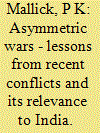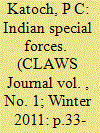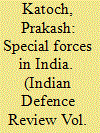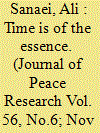| Srl | Item |
| 1 |
ID:
090624


|
|
|
| 2 |
ID:
081392


|
|
|
| 3 |
ID:
110673


|
|
|
| 4 |
ID:
119348


|
|
|
| 5 |
ID:
168999


|
|
|
|
|
| Summary/Abstract |
It is often observed that public support for asymmetric wars diminishes over time, but the micro foundations of this observation are not fully understood. I present a modified war of attrition model for asymmetric wars which shows that as time passes, belligerents’ expectations for the remaining duration of war increase and they find fighting less favorable. Even when we keep the average rate of casualty accrual constant, the anticipated length of fighting into the future affects expected remaining costs of war. Therefore, in a cost-benefit calculation, observed duration causally affects expected remaining costs of war and, hence, leads to lower levels of support for war over time. The longer the war lasts, the more it will look like a never-ending war which may encourage the strong side to cut its losses short and stop the war. Because duration and aggregate costs are highly correlated in observational data, I use a randomized survey experiment to separate the effect of duration from the effect of costs on support for war. The result is that duration has a negative effect on public support which is independent of aggregate costs. This helps us better understand the limits of democratic states’ capabilities in fighting asymmetric wars and suggests that when military planners ignore the role of time, they deploy weaker-than-optimal forces.
|
|
|
|
|
|
|
|
|
|
|
|
|
|
|
|